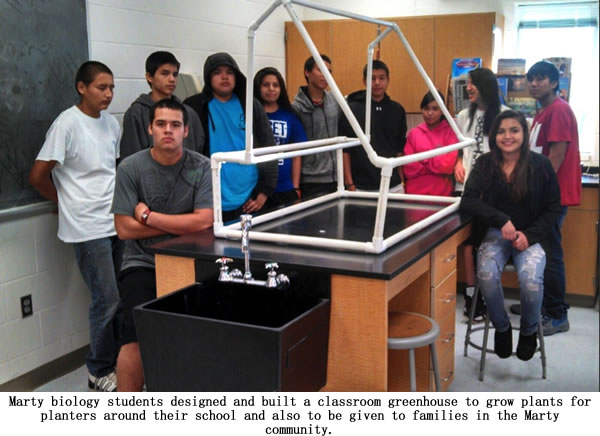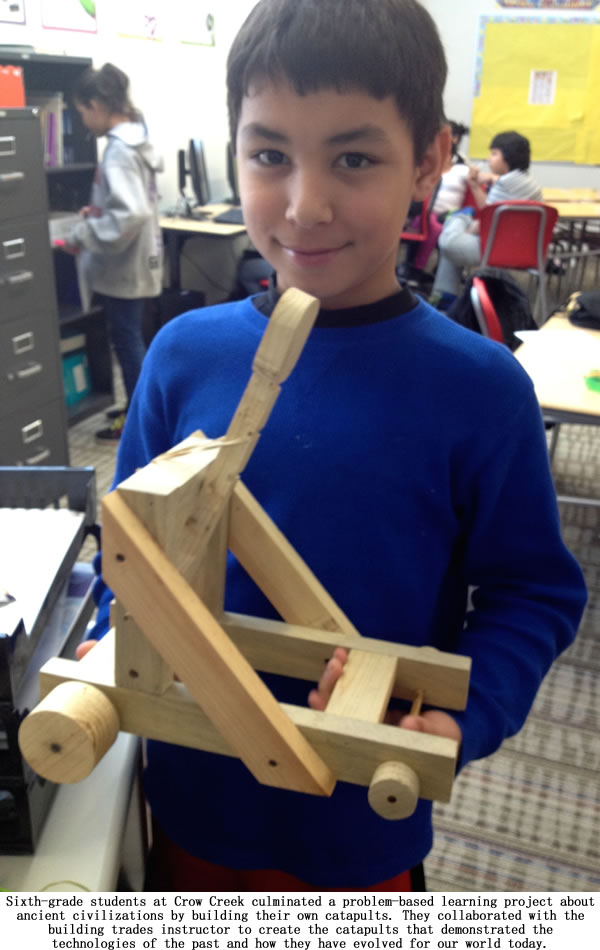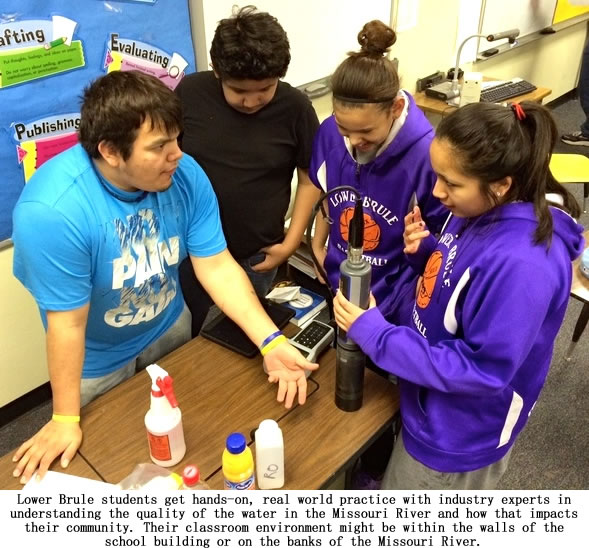 |
Canku Ota
|
 |
|
(Many Paths)
|
||
|
An Online Newsletter
Celebrating Native America
|
||
|
October 2014 - Volume
12 Number 10
|
||
|
|
||
|
Bill Clinton Gives
Nod to American Indian STEM Program
|
||
|
by Tanya H. Lee - Indian
Country Today Media Network
|
||
|
credits: unless otherwise
noted, all photos courtesy of PAST Foundation
|
|
When your science education program figures in remarks made by a former U.S. president, folks pay attention.
President Bill Clinton recognized the work of the PAST Foundation during his opening statement at the 2014 Clinton Global Initiative America Meeting, saying, "In 2012 the PAST Foundation and its partners committed to improve STEM education in rural and Native American reservation schools in South Dakota by equipping 450 teachers with the necessary training to implement an innovative and culturally relevant approach to teaching. It's now known as the South Dakota Innovation Lab, a statewide STEM professional development program that has so far provided 8,300 students with access to quality education that meets them where they are and prepares them for the modern economy."
The SD Innovation Lab is a collaborative effort of the MidCentral Educational Cooperative and Sanford Research. Jill Weimer, associate scientist at Sanford Children's Health Research Center and assistant professor in the Department of Pediatrics at the Sanford School of Medicine of the University of South Dakota, said the program began about three years ago in response to the insight that rural education in South Dakota did not fit into the standard education model coming out of urban settings. "We recognized that we needed to do something new and unique to make sure our kids met the workforce demands of our state," she said, noting that Sanford Research is the largest employer in South Dakota. "We realized we needed to be recruiting our talent pool locally for our research labs, and to do that we needed to be making more effort to get students trained in science and get them going down career paths in science."
Weimer and her colleagues also recognized that trying to interest kids in the sciences when they reached high school was not sufficient, so the SD Innovation Lab also focuses its efforts on elementary and middle schools and is currently working in three schools on South Dakota reservations, with four or five more expected to get involved this year. Kathy Rindels, a language arts teacher at the tribal Crow Creek Middle School, is participating in the program for the second year. This summer she went out to Rapid City, where she worked with Gear-Up, a U.S. Department of Education pre-college enrichment program for American Indian students. Teachers participated with high school students in hands-on science projects and then met as a group to talk about how to implement similar teaching approaches in their classrooms.
Rindels explains how that works: "When I was in Rapid City in June I did a problem-based lesson on water quality. So this year, we'll go to the [Big Bend] dam in Fort Thompson. We'll test the water there and we'll test the water here at the school and we'll see what the differences are in the nitrogen levels and the pH. And then we'll write about it. That's how I can pull in my science. Then I'll pull in my social studies and language arts by having the students write a research paper." Weimer stresses that in addition to promoting hand-on learning experiences, the SDIL focuses on learning that addresses community needs and concerns. Kristen Tucker, a middle school reading, geography and American history teacher at the Yankton Sioux Tribe's Marty Indian School, said, "Problem-based learning is a great strategy for Native American students, in fact, for all students. They enjoy doing the research and having a product to display at the end. They have a sense of accomplishment in seeing where their learning has taken them."
One project she did last year focused on the organization, structure and purpose of the Oceti-shakowin, the confederation of the seven nations Bdewákanthunwan (Mdewakanton), Wahpéthunwan (Wahpeton), Wahpékhute (Wahpekute), Sisíthunwan (Sisseton), the Ihánkthunwan (Yankton), Ihánkthunwanna (Yanktonai), and the Thíthunwan (Teton or Lakota). Her students came "to understand they were part of the confederation and what that means. We've done mapping and counting of acres in terms of historical and today's reservations and connected South Dakota reservations with tribes of the Oceti-shakowin." The goal is to integrate cultural activities with problem-based learning.
Tucker is a strong advocate for problem-based learning and the SDIL. Last year her seventh graders went to the lab and participated in a project involving DNA. "The experience had a huge impact on their learning," Tucker said. "The lab is a great resource for any classroom to go and visit. The SDIL helps pay for travel to Sioux Falls and covers substitute teachers for the day and lunches, as well as all the expenses for the projects and activities in the lab." There are a lot of great education experiences out there, said Tucker, but limited resources can be a problem. "The lab takes funding out of the equation for smaller schools," she said. |
|
|
||
|
|
||
| Canku Ota is a free Newsletter celebrating Native America, its traditions and accomplishments . We do not provide subscriber or visitor names to anyone. Some articles presented in Canku Ota may contain copyright material. We have received appropriate permissions for republishing any articles. Material appearing here is distributed without profit or monetary gain to those who have expressed an interest. This is in accordance with Title 17 U.S.C. Section 107. | ||
|
Canku Ota is a copyright ©
2000 - 2014 of Vicki Williams Barry and Paul Barry.
|
||
 |
 |
|
|
The "Canku
Ota - A Newsletter Celebrating Native America" web site and
its design is the
|
||
|
Copyright ©
1999 - 2014 of Paul C. Barry.
|
||
|
All Rights Reserved.
|
||





